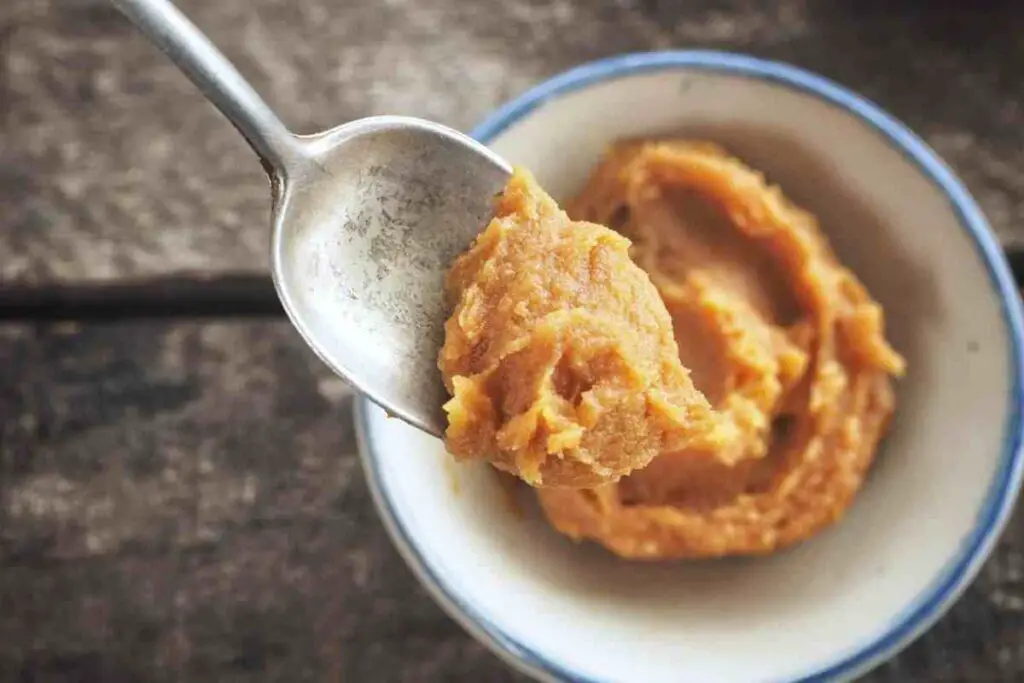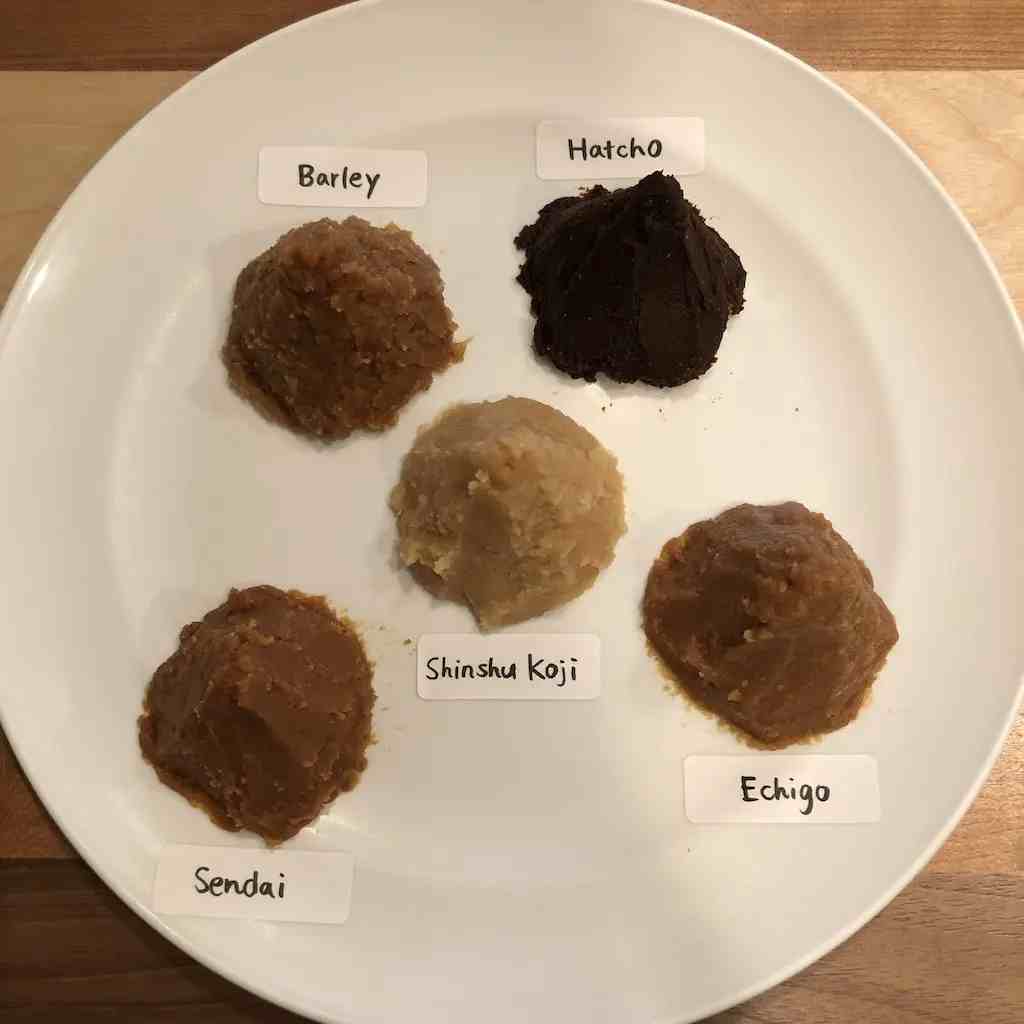Imagine a world where a simple, savory paste could potentially boost your health and add an incredible depth of flavor to your meals. Welcome to the world of miso paste, a staple in Japanese cuisine with a rich history and a wealth of nutritional benefits. But is it okay to eat miso paste everyday? In this article, we will delve into the heart of miso, exploring its origins, types, nutritional content, and health benefits, as well as addressing the question of daily consumption. So, whether you’re a long-time miso lover or a curious newcomer, join us as we embark on this flavorful journey.
What is Miso Paste?

Miso paste is a fermented soybean paste that is commonly used in Japanese cooking. It is made by fermenting steamed soybeans with salt, grains (usually rice or barley), and koji, a type of fungus. Miso paste is known for its salty, savory, and umami-rich flavor. There are various types of miso paste, which differ in texture, fermentation time, and color. Some key points about miso paste include:
- Ingredients: Miso paste is made from soybeans, salt, and koji, a fungus cultivated on rice and other grains.
- Varieties: Over 1,300 variations of miso paste exist, including those containing no soybeans at all.
- Flavor: Miso paste has a salty, savory, and slightly meaty flavor, with some variations having a funky note.
- Storage: Miso paste has a long shelf life when stored properly, usually in the refrigerator.
SHOP FOR THE BEST QUALITY MISO PASTE ON AMAZON
Miso paste is versatile and can be used in various dishes, such as soups, noodles, pasta, and even desserts. It can be diluted in hot water to create a soul-reviving miso soup. Other uses for miso paste include marinades, glazes, and sauces. To create a miso paste substitute, you can mix 1 tablespoon of soy sauce with about 3 tablespoons of mashed tofu, although the umami and depth of flavor may not be the same as miso since it’s a fermented product.
Miso Paste Nutrition Facts
Miso paste is a fermented soybean paste that is commonly used in Japanese cooking. Its nutritional content can vary slightly depending on the source, but generally, a one-tablespoon serving of miso paste provides around 30-35 calories, 1-2 grams of fat, 3-4.3 grams of carbohydrates, and 2-3 grams of protein. It is also a source of various nutrients, including iron, zinc, folate, and manganese.
Miso paste is known for its rich, savory flavor and is a staple of Asian cuisine, adding the fifth taste known as “umami” to dishes. It is a versatile ingredient used in soups, dressings, marinades, and various other dishes. Miso paste is also rich in beneficial bacteria and is associated with several health benefits, such as improved digestion and a stronger immune system. When stored properly, unopened miso paste can be kept at room temperature for long periods, but once opened, it should be stored in the refrigerator and ideally consumed within a year.

Types of Miso Paste

There are many types of miso paste, which vary in color, flavor, ingredients, and fermentation time. Some of the most common types are:
- White miso (shiro miso): This is the mildest and sweetest type of miso, made with a high ratio of rice to soybeans and fermented for a short period of time. It has a light yellow or beige color and a smooth texture. It is often used for soups, dressings, and desserts.
- Red miso (aka miso): This is the saltiest and most intense type of miso, made with a higher proportion of soybeans and fermented for a long period of time. It has a dark red or brown color and a chunky texture. It is often used for stews, marinades, and sauces.
- Yellow miso (shinshu miso): This is a medium type of miso, made with a balanced ratio of rice and soybeans and fermented for a moderate period of time. It has a light brown or amber color and a slightly acidic taste. It is often used for soups, noodles, and vegetables.
- Mixed miso (awase miso): This is a blend of two or more types of miso, usually white and red. It has a varied color and flavor, depending on the proportions and types of miso used. It is a versatile type of miso that can be used for various dishes.
SHOP FOR THE BEST QUALITY MISO PASTE ON AMAZON
There are also other types of miso that use different grains, such as barley, rye, or buckwheat, or different ingredients, such as seaweed, ginger, or chili. Each type of miso has its own characteristics and uses, so you can experiment with different ones to find your favorite.
Health Benefits
Miso paste is known for its potential health benefits, which are largely due to its fermentation process and nutrient-rich profile. Here are some of the key health benefits associated with miso paste:
- Boosts Digestion: The fermentation process used to produce miso promotes the growth of probiotics, beneficial bacteria that aid digestion.
- Strengthens the Immune System: Miso is a source of probiotics, which are known to boost the immune system and help fight disease.
- Nutrient-Rich: Miso contains a good amount of vitamins, minerals, and beneficial plant compounds. However, it’s important to note that miso is usually consumed in small amounts, so the micronutrient content may not be significant.
- Potential Disease Prevention: Some studies suggest that consuming miso can help reduce the risk of certain diseases, including heart disease and certain types of cancer.
- Better Blood Glucose Control: There is some evidence that adding soybean foods like miso to your diet can help control blood glucose levels.
- Lower Blood Pressure and Heart Rate: Some research suggests that miso might help lower blood pressure and heart rate.
- Lower Cholesterol: There is some evidence that miso might help lower cholesterol levels.
- Bone Health: Miso paste contains vitamin K, which is important for bone health. Vitamin K is involved in the regulation of calcium and may contribute to bone mineralization.
Remember, while miso paste can be a healthy addition to many dishes, it’s always important to consume it as part of a balanced diet. If you have any specific dietary concerns or health conditions, it’s best to consult with a healthcare professional before making any significant changes to your diet. Also, keep in mind that miso is high in salt, so it’s important to monitor your intake if you’re watching your sodium levels.
Is It Safe to Eat Raw Miso Paste?
Yes, it is generally safe to eat raw miso paste. The fermentation process involved in making miso paste kills harmful bacteria. However, some strains of bacteria may survive in raw miso paste. Eating raw or undercooked foods can increase your risk of foodborne illness. Raw miso may contain harmful bacteria such as salmonella or listeria, which can cause food poisoning if consumed. In addition, consuming too much raw miso can also lead to an upset stomach or other digestive issues due to its high salt content.
In general, it’s best to cook miso paste before consuming it as part of a meal. However, small amounts of raw miso used as a condiment are generally safe for most people. To reduce your risk of consuming harmful bacteria or toxins:
- Store your miso paste in the refrigerator
- Use only fresh and properly stored miso paste
- Avoid eating large amounts of raw or undercooked foods
It’s always best to start slowly and gradually increase your intake. Please note that some people may experience digestive discomfort when consuming raw miso in large quantities.
SHOP FOR THE BEST QUALITY MISO PASTE ON AMAZON
Also, while miso is often eaten in hot dishes, you should avoid boiling it as too much heat will kill the beneficial bacterial activity from the miso. It can be eaten raw and used directly or heated up at the last minute for soups. But boiling it will ruin all the good bacteria that make it such a healthy choice.
Please consult with a healthcare professional if you have specific dietary concerns or questions.
Is It OK to Eat Miso Paste Everyday?
Miso paste is a fermented soy product that is widely used in Japanese cuisine. It has a rich and savory flavor that can enhance various dishes. Miso paste may also have some health benefits, such as providing protein, B vitamins, and probiotics. However, there are also some considerations for eating miso paste everyday, such as:
- Sodium content: Miso paste is very high in sodium, which can raise blood pressure and increase the risk of cardiovascular diseases. One tablespoon of miso paste contains about 634mg of sodium, which is 26% of the recommended daily intake. Therefore, it is important to limit the amount of miso paste and other salty foods in your diet, and to drink plenty of water to flush out the excess sodium.
- Allergies: Miso paste is made from soybeans, which are a common allergen. Some people may have an allergic reaction to soy or other ingredients in miso paste, such as rice, barley, or wheat. Symptoms of a soy allergy may include hives, itching, swelling, wheezing, nausea, vomiting, or anaphylaxis. If you have a soy allergy or intolerance, you should avoid miso paste and other soy products.
- Raw consumption: Eating raw or undercooked miso paste can increase the risk of foodborne illness, as it may contain harmful bacteria such as salmonella or listeria. These bacteria can cause food poisoning, which may result in fever, diarrhea, abdominal cramps, or dehydration. To prevent this, you should always cook miso paste before eating it, or use pasteurized miso paste that has been heated to kill any bacteria.
- Moderation: As with any food, moderation is key when it comes to eating miso paste. Miso paste can be a healthy addition to your diet, but it should not be the main source of your nutrition. You should also balance your intake of miso paste with other foods that provide different nutrients, such as fruits, vegetables, whole grains, lean proteins, and healthy fats.
SHOP FOR THE BEST QUALITY SOYABEAN ON AMAZON
In conclusion, miso paste can be a delicious and nutritious condiment, but it also has some drawbacks that you should be aware of. If you want to eat miso paste everyday, you should do so in small amounts, and be mindful of the sodium content, potential allergies, and raw consumption. You should also vary your diet with other foods that offer different benefits.
How to Prepare Miso Paste?
Miso paste is a fermented soy product that is widely used in Japanese cuisine. It has a rich and savory flavor that can enhance various dishes. To prepare miso paste from scratch, you will need the following ingredients:
- Dried soybeans
- All-natural miso paste (for starting fermentation)
- Sea salt, finely ground
- Rice koji (which contains the fungus aspergillus oryzae)
The process of making miso paste takes two days, but it is not until six months later that you can use the product. Here are the basic steps:
- Soak the soybeans overnight in cold water until they double in size.
- Cook the soybeans in plenty of water until they are soft and easily mashed.
- Drain the soybeans and reserve some of the cooking water.
- In a food processor, puree the soybeans until smooth.
- In a large bowl, combine the ground soybeans, rice koji, salt, and miso paste. Mix well by hand.
- If necessary, add some of the cooking water to obtain a dough-like texture. The miso paste should remain firm when pressed in the palm of your hand.
- Transfer the miso paste to a sterilized glass jar or crock and press it down firmly to remove any air pockets.
- Cover the surface of the miso paste with a layer of salt to prevent mold growth.
- Place a weight on top of the salt layer to keep the miso paste compacted.
- Cover the jar or crock with a lid or cloth and store it in a cool and dark place for six to twelve months.
- Check the miso paste occasionally and remove any mold or salt crystals that may form on the surface.
- After six months, you can start tasting the miso paste and decide when it is ready to use. The longer it ferments, the darker and stronger it becomes.
You can use your homemade miso paste for various dishes, such as miso soup, salad dressing, marinade, sauce, and more. Enjoy the rich and complex flavor of your own miso paste!
How Can I Incorporate Miso Paste Into My Diet?

Miso paste is a versatile ingredient that can add flavor and nutrition to many dishes. Here are some ideas on how to incorporate miso paste into your diet:
- Miso soup: This is the most classic and simple way to use miso paste. Just dissolve some miso paste in hot water or broth, and add your favorite toppings, such as tofu, seaweed, green onions, mushrooms, or eggs. You can enjoy miso soup as a starter, a snack, or a light meal.
- Miso dressing: You can make a delicious and easy miso dressing by whisking together some miso paste, rice vinegar, soy sauce, sesame oil, and honey. You can use this dressing to toss with salads, noodles, or grain bowls. You can also drizzle it over roasted or steamed vegetables, fish, chicken, or tofu.
- Miso glaze: You can make a savory and sweet miso glaze by combining some miso paste, maple syrup, soy sauce, and chili sauce. You can use this glaze to brush over salmon, steak, pork, chicken, or tofu before baking, broiling, or grilling. You can also use it as a dip for skewers, dumplings, or spring rolls.
- Miso pesto: You can make a vegan and nut-free miso pesto by blending together some miso paste, basil, garlic, lemon juice, and olive oil. You can use this pesto to toss with pasta, rice, or quinoa. You can also spread it on sandwiches, wraps, or pizzas.
- Miso butter: You can make rich and creamy miso butter by mixing some miso paste and softened butter. You can use this butter to melt over corn, potatoes, bread, or popcorn. You can also use it to sauté or roast vegetables, meat, or seafood.
- Miso hummus: You can make a smooth and flavorful miso hummus by blending together some miso paste, chickpeas, tahini, garlic, lemon juice, and water. You can use this hummus as a dip for crackers, pita bread, or fresh vegetables. You can also use it as a spread for sandwiches, burgers, or wraps.
- Miso marinade: You can make a simple and tasty miso marinade by whisking together some miso paste, water, mirin, and ginger. You can use this marinade to soak chicken, beef, pork, tofu, or tempeh for at least 30 minutes before cooking. You can also use it to flavor soups, stews, or stir-fries.
SHOP FOR THE BEST QUALITY SOYABEAN ON AMAZON
These are just some of the ways you can use miso paste in your diet. You can experiment with different types and amounts of miso paste to suit your taste and preference. Miso paste can add a lot of umami, saltiness, and sweetness to your dishes, so you may need to adjust the seasoning accordingly. Miso paste can also last for a long time in the fridge, so you can always have some on hand for whenever you need a boost of flavor.
FAQs
Q 1. Is miso paste gluten-free?
Ans. Most miso pastes are gluten-free, but it can depend on the specific brand and type of miso. Always check the label if you’re following a gluten-free diet.
Q 2. Is miso paste vegan?
Ans. Yes, traditional miso paste is typically vegan as it’s made from soybeans, grains, and a type of fungus called koji.
Q 3. How should I store miso paste?
Ans. Miso paste should be stored in the refrigerator to maintain its freshness and quality.
Q 4. What does miso paste taste like?
Ans. Miso paste has a unique umami flavor that’s savory, salty, and slightly sweet. The flavor can vary depending on the type of miso.
Q 5. Can I use miso paste as a substitute for soy sauce?
Ans. While both are made from fermented soybeans, miso paste and soy sauce have different flavors and consistencies. However, in some recipes, you can use miso paste as a substitute for soy sauce.
Q 6. What’s the difference between red and white miso paste?
Ans. Red miso paste is fermented for a longer period than white miso paste, giving it a darker color and a stronger, saltier flavor.
Q 7. Is miso paste good for weight loss?
Ans. Miso paste is low in calories and can be part of a healthy diet, but it’s not a magic solution for weight loss. As always, a balanced diet and regular exercise are key for weight management.
Q 8. Can I eat miso paste if I have high blood pressure?
Ans. Miso paste is high in sodium, which can raise blood pressure. If you have high blood pressure, it’s best to consult with a healthcare professional before adding miso paste to your diet.
Q 9. Is miso paste safe for pregnant women?
Ans. Miso paste is generally safe for pregnant women when consumed in moderation. However, it’s always best to consult with a healthcare professional.
Q 10. Can children eat miso paste?
Ans. Yes, children can eat miso paste. However, due to its high sodium content, it should be given in moderation.
Conclusion
In conclusion, miso paste is a versatile and flavorful ingredient that can be a beneficial addition to a balanced diet. Its rich umami flavor and potential health benefits make it a popular choice in many cuisines, particularly in Japanese cooking. However, like any food, it should be consumed in moderation due to its high sodium content.
BEST YOGA ASANAS TO IMPROVE CONCENTRATION
Whether you’re using it in soups, marinades, sauces, or dressings, miso paste can add a depth of flavor to your dishes while also providing nutritional benefits. Remember, it’s always important to consult with a healthcare professional before making any significant changes to your diet. So, the next time you’re looking for a way to enhance your meals, why not give miso paste a try?

Good day, and welcome to Fitthour. My name is Shubham Vijay, and I am a certified personal trainer and nutrition coach with 6 years of experience in the fitness industry. At Fitthour, we specialize in types of training, such as strength training, cardio, or HIIT, and our mission is to help clients achieve their fitness goals and improve their overall health.




